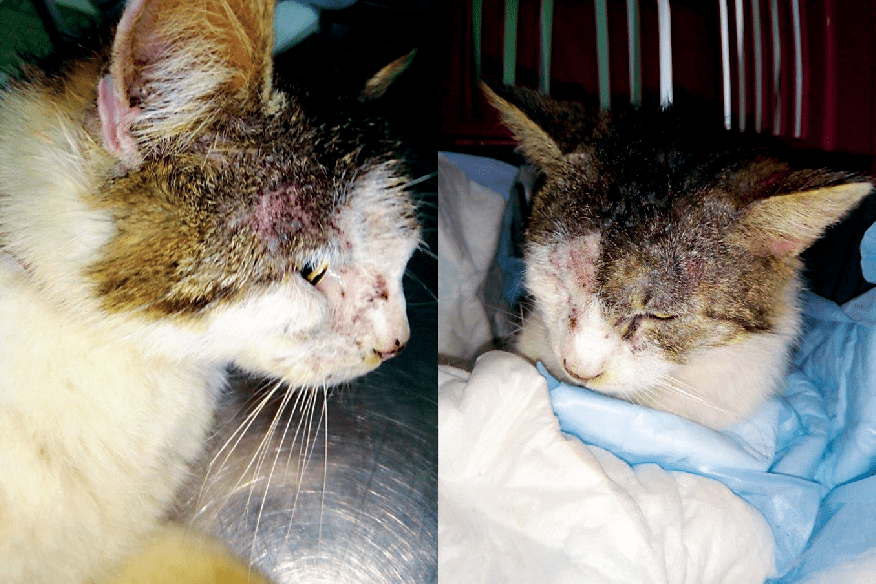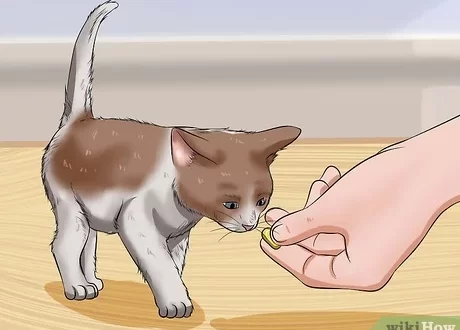
Notoedrosis in cats: causes, symptoms and treatment
Notoedrosis, or scabies, is a skin disease of a contagious nature, that is, transmitted by interaction with a sick animal. How to understand that a cat has become infected and avoid serious consequences?
Notoedres cati is a tiny mite with a maximum size of 0,45 mm that causes notoedrosis in cats. It lives on the skin and feeds on the epidermis and blood. Most often very young, elderly or debilitated cats suffer from notoedrosis. For a healthy adult, the tick poses a slightly lesser danger. However, upon discovering signs of illness in a pet, you must immediately sign up for veterinarian.
Contents
Symptoms of the disease
The parasite Notoedres cati lives on the head, in the auricles. But, unlike ear mites, over time, in about 7-8 weeks, it spreads throughout the head, and then throughout the body of the animal. The waste products of ticks cause severe intoxication of the cat’s body, and it is impossible to notice the parasite with the naked eye. The fact that the pet has become infected with notoedrosis can be determined by the following signs:
- hair loss in the head and neck area,
- itching,
- severe itching, sometimes to the point of blood,
- the formation of crusts of a grayish or yellowish color,
- thickening of the skin, the appearance of wrinkles,
- restless behavior.
If treatment is not started in a timely manner, sores, abscesses, and even skin necrosis may appear.
Contagious notohedrosis
Upon contact with a sick animal, the owner can also become infected with a tick, but the disease does not pose a danger to humans. In the places of tick bites, an allergic reaction occurs, similar to hives, after which it quickly passes.
If other pets live in the house, you should immediately isolate the sick cat, and treat all beds, bowls and trays from parasites. This is because Notoedres cati can exist for some time outside its usual habitat – about 12 days. To make sure that other pets are not infected, they should also be seen by a doctor.
Notoedrosis in cats: treatment
At the appointment, the doctor conducts an initial examination of the pet, collects a skin scraping, and then makes a diagnosis. When it is confirmed, the treatment of notoedrosis begins in several stages:
- isolating the cat from other pets, if this has not been done before the appointment with the doctor;
- a haircut;
- bathing once a week with a special shampoo that softens crusts on the skin;
- daily use of ointments with sulfur.
It is categorically not recommended to remove the crusts on your own, as this can lead to a secondary infection. If the cat shows too much anxiety and rips the skin the doctor prescribes sedatives.
Preventive measures
As with other parasites, prevention measures include:
- restriction of the free range of the animal,
- treatment for ticks and fleas,
- regular check-ups with a veterinarian,
- keeping the beds and habitats of the cat clean,
- balanced pet food.
It is important to monitor the health of the cat, as weak immunity increases the risk of infection and complications.
See also:
- What diseases can you catch from a cat?
- Feline immunodeficiency virus: causes, symptoms, prognosis
- The most common cat diseases: symptoms and treatment





